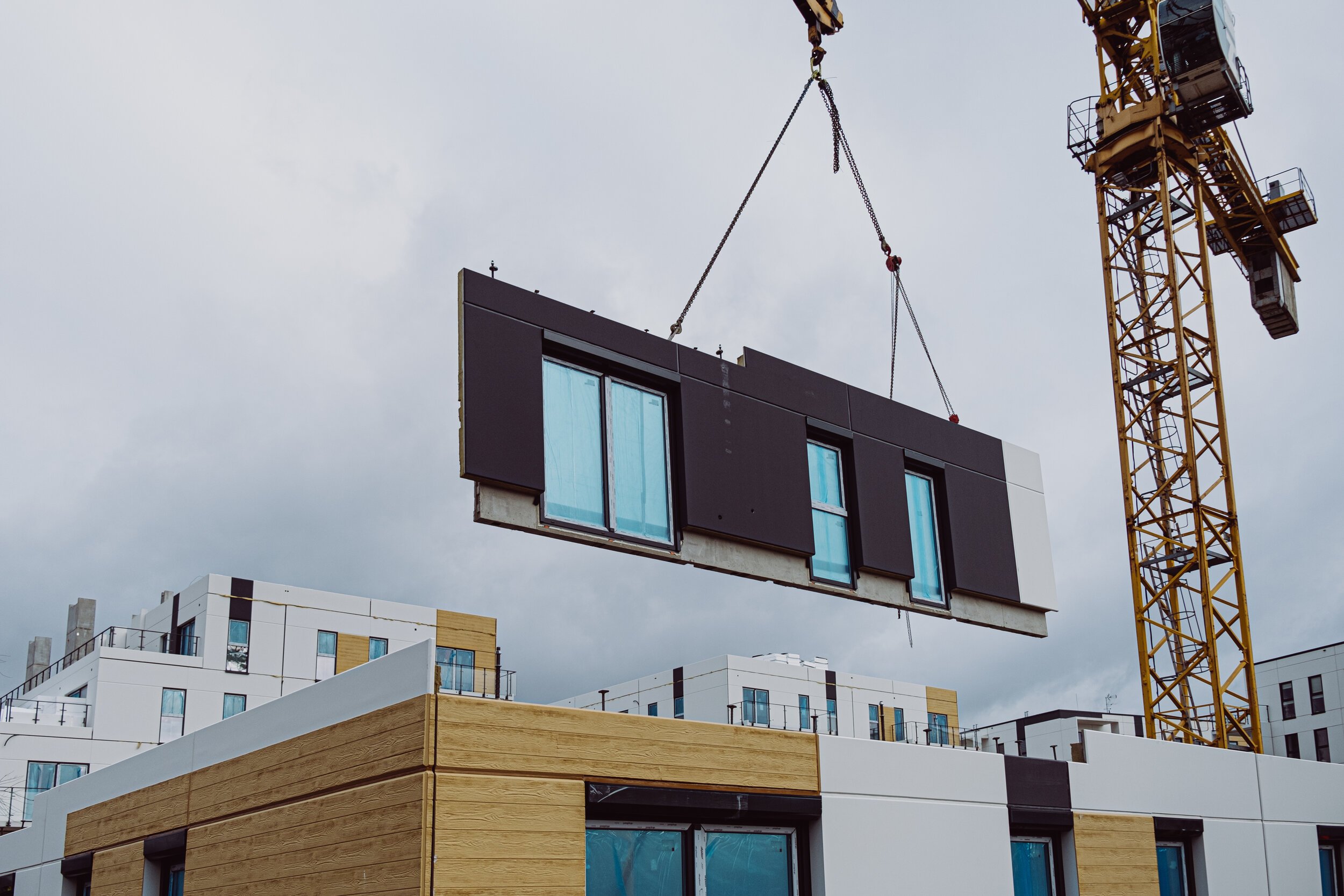Exploring a Prefabricated Future
The construction industry is constantly evolving to find new and creative solutions to meet increased demand for cheaper and faster building materials and processes. In some instances, prefabricated buildings, also called prefabs, have been part of a global response to provide facilities for housing, healthcare, education, and other critical sectors.
Machine-built in factories prior to being transported on site, prefabricated units can be sheltered from construction and financial factors that otherwise impact traditional builds such as adverse weather conditions or human operating errors. Precise and machine-led building processes make it easier for these structures to achieve manufacturing goals around air tightness and quality testing. Prefabricated units can then be assembled or integrated into functional spaces faster, cheaper, and sometimes to higher consistency than traditional builds.
Smaller construction teams can work together to concurrently assemble multiple prefabs as they become experts at how each piece fits in the identical units. The predictability of these builds drives more time and cost savings through the construction stage and accelerated project turnaround enables buildings to start operating sooner, generating revenue for construction managers faster than a traditional build schedule.
The time and cost efficiency of prefabs allow them to be part of a response plan in the face of an unexpected crisis. Some countries like the United Kingdom opted to build prefabricated healthcare facilities in response to the increasing strain on hospitals during the COVID-19 pandemic. The need for fewer construction team members on prefab sites has been an added benefit during a time when project managers are continuously navigating recommendations to promote site safety through social-distancing and reducing unnecessary contact. In British Columbia, the City of Vancouver has started leveraging low-cost prefabricated single homes to combat the ongoing housing crisis. The modular nature of these prefabricated, identical structures mean that doctors working in a new prefab hospital have the same experience in each operating room, patient rooms are identical, and those in need of housing are given the same space and amenities as their neighbour – driving overall cost efficiencies for each unit.
While there are benefits to prefabs, traditional construction methods are certainly here to stay as dynamic and unique builds are fundamental to the continuous development of the built environment. At AES, we’re always on the lookout for new trends and ideas that our clients have for their latest projects and we’re eager to experience the growing influence of prefabricated buildings.


